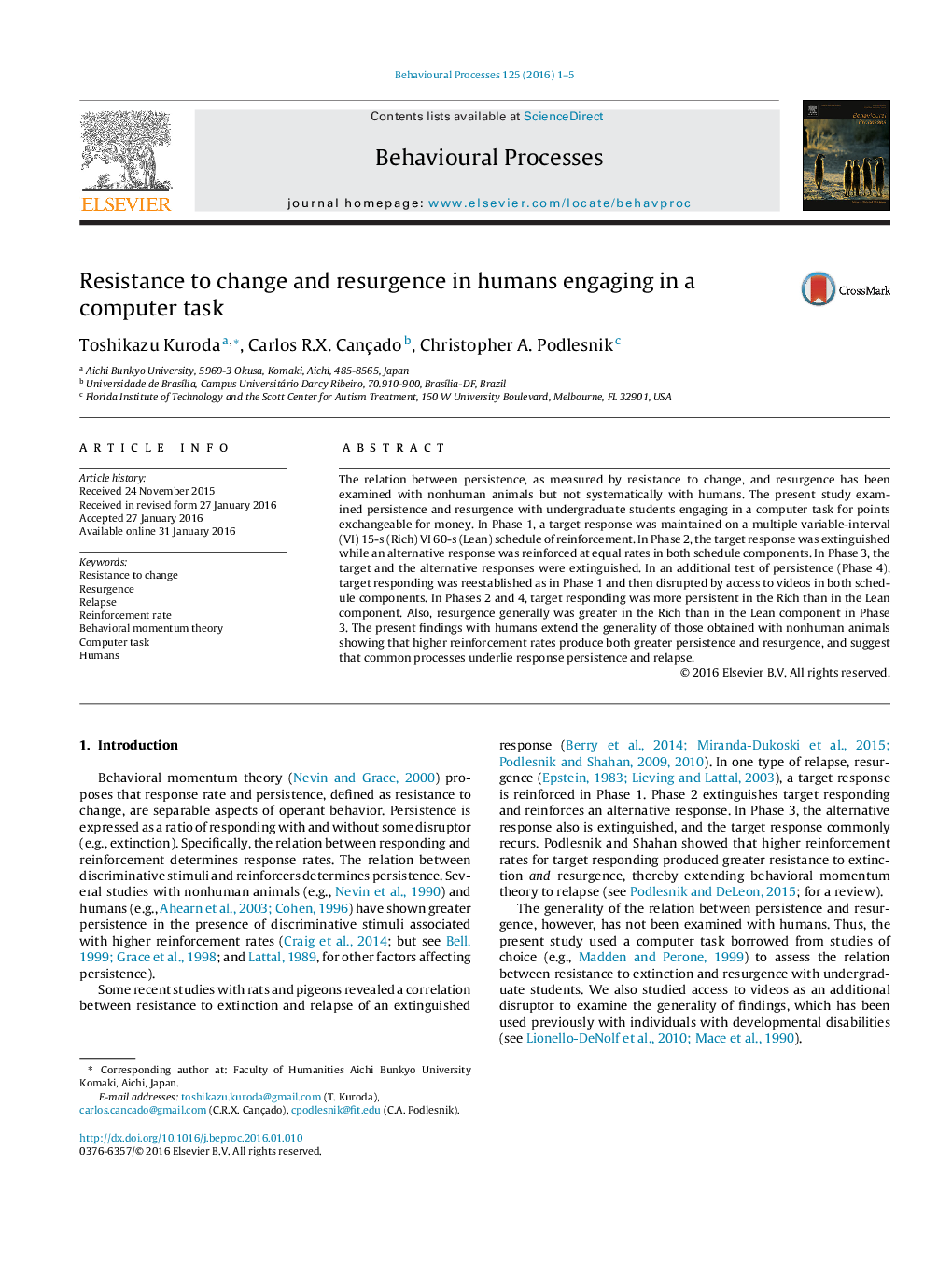| Article ID | Journal | Published Year | Pages | File Type |
|---|---|---|---|---|
| 2426393 | Behavioural Processes | 2016 | 5 Pages |
•The relation between resistance to change and resurgence was studied with humans.•Higher training reinforcement rates produced greater resistance to access to videos.•Higher reinforcement rates also produced greater resistance to extinction.•Greater resistance to change was associated with greater resurgence
The relation between persistence, as measured by resistance to change, and resurgence has been examined with nonhuman animals but not systematically with humans. The present study examined persistence and resurgence with undergraduate students engaging in a computer task for points exchangeable for money. In Phase 1, a target response was maintained on a multiple variable-interval (VI) 15-s (Rich) VI 60-s (Lean) schedule of reinforcement. In Phase 2, the target response was extinguished while an alternative response was reinforced at equal rates in both schedule components. In Phase 3, the target and the alternative responses were extinguished. In an additional test of persistence (Phase 4), target responding was reestablished as in Phase 1 and then disrupted by access to videos in both schedule components. In Phases 2 and 4, target responding was more persistent in the Rich than in the Lean component. Also, resurgence generally was greater in the Rich than in the Lean component in Phase 3. The present findings with humans extend the generality of those obtained with nonhuman animals showing that higher reinforcement rates produce both greater persistence and resurgence, and suggest that common processes underlie response persistence and relapse.
